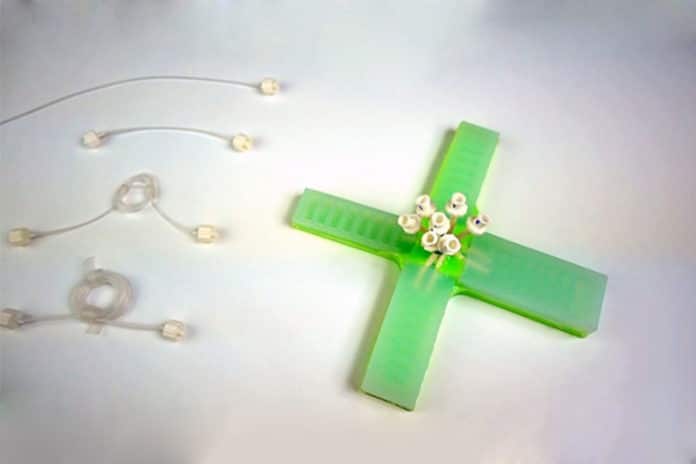Soft robots have a number of advantages over hard robots which also includes the ability to handle irregular-shaped objects, squeeze into tight spaces, and easily recover from the collision. They may be the future of robotics, but there are still many limitations in their designs like complexity, costs and the need for wires. Always being connected to the external devices by wire may limit their functionality for situations like space exploration, search and rescue, medical surgeries and more.
Now, Harvard researchers have found a way to overcome this problem. They have developed a soft robot that could be the first step towards untethering the soft robot.
This new simplified soft robot is powered by pressurized air which replaces the multiple control systems with one input, reducing the number, weight, and complexity of the components needed to power the device.
“Before this research, we couldn’t build fluidic soft robots without independently controlling each actuator through separate input lines and pressure supplies and a complex actuation process,” said Nikolaos Vasios, a graduate student at the Harvard John A. Paulson School of Engineering and Applied Sciences (SEAS). “Now, we can embed the functionality of fluidic soft robots in their design, allowing for a substantial simplification in their actuation.”
It uses fluid at different viscosities to control the speed at which air moves through the robot. The researchers, led by Katia Bertoldi, the William and Ami Kuan Danoff Professor of Applied Mechanics at SEAS, carefully selected tubes of different sizes to control how quickly air moves through the device.
A single input pumps the same amount of air through one of the tubes, but the size of the tubes determines how and where the air flows. Simply send the air through the right set of tubes, if you want the robot to crawl forward.
“Our work presents for the first time a strategy that can be used to make simply actuated fluidic soft robots, based on this well-known phenomenon of viscous flow,” said Bertoldi, who is also an Associate Faculty at the Wyss Institute at Harvard University. “With the strategy presented in our work, the actuation of fluidic soft robots will now be simpler and easier than ever, taking a major step towards fully untethered and simply actuated soft robots.”
The robot looks like a simple cross-shaped quadruped, and it currently needs an external source of air. But, the simplicity and reduced parts could make it practical for all kinds of tasks such as space exploration or search and rescue. They could scramble across rough terrain without as much caution as more fragile conventional robots and could be more affordable.
The research was published in Soft Robotics.
